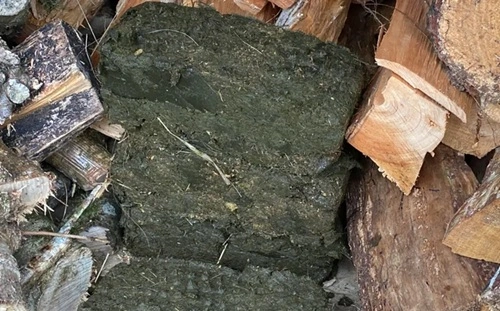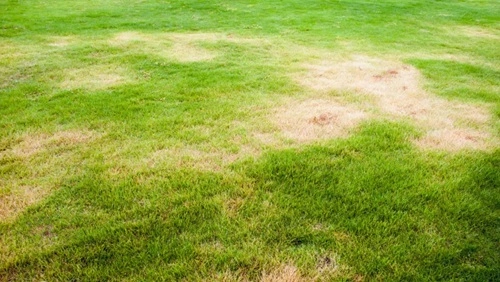Cardboard seems harmless — after all, it’s just paper, right? Many people think burning cardboard in a backyard fire pit or burn barrel is an easy way to get rid of boxes. But under U.S. environmental and fire safety laws, burning cardboard is often illegal or heavily restricted.
While it might not seem as dangerous as burning plastics or rubber, the smoke from cardboard fires still releases pollutants and can violate local or state clean air laws. Here’s a detailed look at what federal, state, and local laws say about burning cardboard — and what you can do instead.

Federal Law: The EPA’s Position on Burning Cardboard
At the federal level, the U.S. Environmental Protection Agency (EPA) regulates air pollution under the Clean Air Act (CAA). Although the EPA doesn’t have a single rule that says “you cannot burn cardboard,” it does prohibit open burning of solid waste that produces smoke or harmful emissions.
Under 40 CFR § 49.131 (General Open Burning Rule):
- Open burning is prohibited when it involves materials that produce dense smoke, toxic fumes, or air contaminants.
- The EPA defines “solid waste” broadly — and that includes cardboard and paper waste from households or businesses.
- Only limited exceptions exist for clean, untreated natural materials like yard waste, brush, or firewood.
In simple terms: burning cardboard outdoors or in a barrel is not federally permitted unless your local area has an approved program that allows small-scale burning under controlled conditions.
Even when allowed, the EPA strongly discourages backyard burning of any kind because it releases fine particulate matter (PM2.5), which harms respiratory health.
State and Local Laws: Often Stricter Than Federal Rules
Each U.S. state sets its own open burning policies, and most states ban burning cardboard and paper waste altogether. Here are a few examples:
- California: The California Air Resources Board forbids burning of paper or cardboard waste except by permit in specific agricultural operations.
- Texas: Under 30 TAC §111.201, burning cardboard is not allowed unless you are burning it with other “natural” materials for disposal on your own property — and even then, it must not contain coatings, ink, or plastic tape.
- New York: Open burning of paper, cardboard, and trash is banned statewide, even in rural areas. Only brush and clean wood may be burned with local approval.
- Florida: The Florida Administrative Code prohibits burning of household waste, including paper, cardboard, and packaging materials.
- Ohio and Illinois: Both restrict open burning to yard debris only. Cardboard is considered refuse and cannot be burned legally.
On top of these state laws, local ordinances may be even stricter. Many cities and counties require burn permits, impose “no-burn days”, or ban open burning completely during dry seasons due to wildfire risks.
Penalties for Burning Cardboard
Burning cardboard illegally can lead to both civil and criminal penalties depending on the state and intent. Common consequences include:
- Fines: Usually between $500 and $10,000 per violation.
- Cleanup or fire suppression costs if authorities have to respond.
- Criminal charges for repeated or intentional violations, especially during air quality advisories or burn bans.
- Civil liability if your fire spreads or damages someone else’s property.
Many states treat open burning violations as environmental offenses, which can stay on your record and affect permit eligibility.
Why It’s Illegal (and Unsafe)
Cardboard might look simple, but modern packaging is rarely “pure paper.” Most boxes contain:
- Inks and dyes for printing logos or text
- Adhesives and coatings for strength and moisture resistance
- Plastic films or wax layers in shipping boxes
When burned, these materials release volatile organic compounds (VOCs), carbon monoxide, and fine particulate matter that contribute to air pollution and health risks.
Smoke from cardboard fires can irritate lungs, trigger asthma, and pollute surrounding air — which is why regulators discourage even small, backyard burns.
FAQs: Burning Cardboard in the U.S.
Q1. Can I burn cardboard in my backyard fire pit?
Usually not. Most states prohibit burning cardboard or household waste outdoors. Even if not explicitly illegal, it can violate local air quality ordinances.
Q2. Are there exceptions for small or rural properties?
Some rural counties allow limited open burning with permits, but even then, it’s generally restricted to yard waste, not cardboard.
Q3. What if I use cardboard as a fire starter in a fireplace or wood stove?
Small amounts of plain, untreated cardboard may be used to start fires indoors in properly vented wood stoves or fireplaces — but large quantities should never be burned.
Q4. What happens if I get caught burning cardboard illegally?
You could face fines, citations, or enforcement action from your state’s environmental agency or local fire department.
Q5. What’s the best way to get rid of cardboard legally?
Recycle it! Most municipalities have curbside recycling or drop-off centers that accept clean cardboard for processing.
Bottom Line
Burning cardboard might seem harmless, but in most of the U.S., it’s illegal or heavily restricted. The smoke and chemicals released pose real risks to health and the environment. Instead of burning, recycle your boxes or repurpose them — it’s safer, cleaner, and fully legal.

